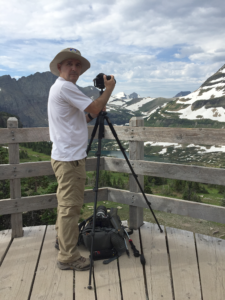Photography
Capturing Magic Through The Lens
 I like to travel. Although I live in the Northeast, I am attracted by the splendor of the American Southwest.
I like to travel. Although I live in the Northeast, I am attracted by the splendor of the American Southwest.
Seeing the sheer beauty of the National Parks instilled in me a need to immortalize the experience. It is through these visits that my passion for photography grew.
I am, as writer Mark Prensky wrote in his 2001 Digital Natives, Digital Immigrants article, a digital native to photography. I have not worked with film cameras, even though I visited a dark room or two in the past.
My first camera was an Olympus Camedia C700 2.1MP Digital Camera w/ 10x Optical Zoom. I thought it was fantastic to see the images instantly on the screen and not have to wait for the film to be developed. But the shortcomings of the limited pixel density eventually became apparent.
My second camera was an upgrade to a Digital Single-Lens Reflex (DSLR): Canon EOS 6.3MP Digital Rebel Camera with an EF-S 18-55mm lens. It was my first experience with a DSLR, and the original Rebel was a great introduction. To be completely honest, I did not take advantage of the camera’s capabilities. I shot mostly in automatic – with a smattering of aperture priority sprinkled in – and exclusively in .jpg format. And I was never happy with the results, as I could not replicate the depth of field nor the dynamic range of some of the photographs by which I was inspired.
National Parks – Sources of Inspiration
I am in love with America’s National Parks. Every year I try to visit at least one park. If I am lucky, I may get to two or three. A few years back, I visited Glacier, Yellowstone, and Grand Teton National Parks during the same trip. It was in the summer time, so I had to share the parks with a lot of others. But the beauty of those parks is that even when they are crowded, one can still feel the peace, tranquility, and wonder associated with those majestic locations. In some cases, due to the sheer size of the park, the crowds do not seem to impact one’s enjoyment.
Glacier is connected to Canada’s Waterton Lakes National Park, so I crossed the border to visit this unique biosphere shared by the two countries. Referred to as Waterton – Glacier International Peace Park, this area has received the International Dark-Sky Association’s (IDA) designation as Provisional International Dark Sky Park. It is the first designation in the history of IDA’s International Dark Sky Places Program that spans an international boundary. Since the designation had been conferred only a couple of months before my visit, with curiosity getting the best of me, I had to see the night sky for myself and through my camera lens.
The Role of Light
In my images, I had stressed subject. The subject was the most important piece to get in the shot, whether it was a good composition or not. After a while, I began to focus – no pun intended – my attention on the composition of the image and how I wanted to frame the subject. Let’s just say that it has been an ongoing effort ever since.
However, the moment of clarity about what makes a good image came when I heard a short interview with Michael Frye, a noted landscape photographer, well-known for his Yosemite depictions. He was clearly answering the interviewee question, but I thought he was speaking to me when he mentioned that photography is more about light than anything. He said,
“After all, we don’t really photograph objects; we photograph the light reflected off of objects.”
I took that message to heart and have strived to look for great light whenever a photo opportunity would appear. Sometimes, the light would find you and bring an eerie feel to the image; other times, you would chase the light, or be patient enough for it to change. One thing is certain: we do not control the light.
“Travel is fatal to prejudice, bigotry, and narrow-mindedness…”
Mark Twain